Oscilloscopes
We have new and used oscilloscopes for sale from Siglent, Hantek, Owon and several other top brands.
Browse by selecting different features or scroll below to learn more about Oscilloscopes, tips for buying one review oscilloscope products, and more!
Filters
Filters
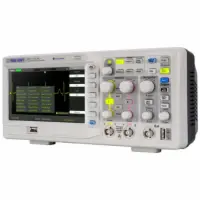
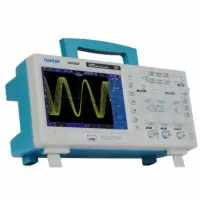
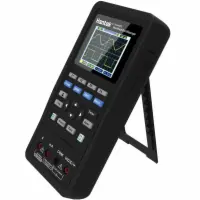
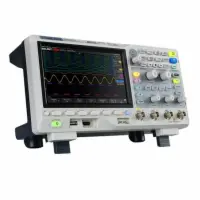
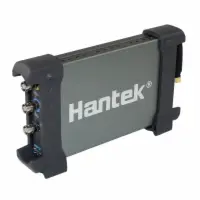
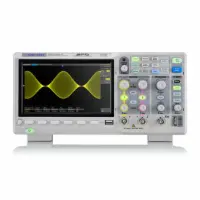
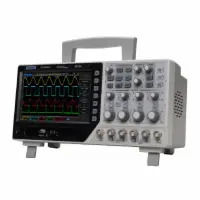
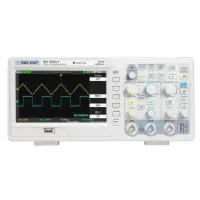
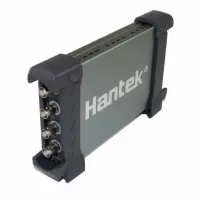
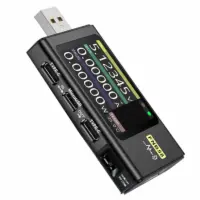
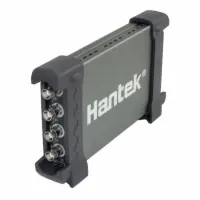
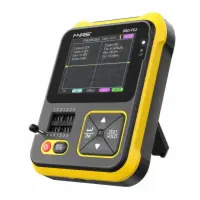
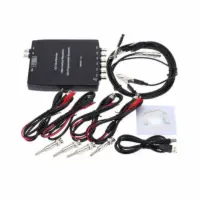
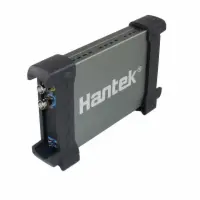
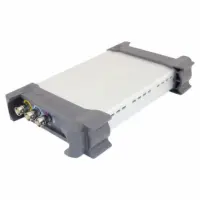

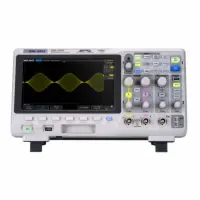
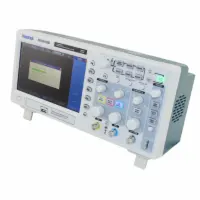
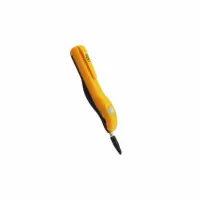

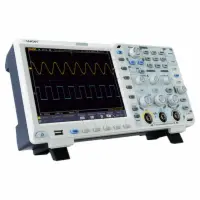
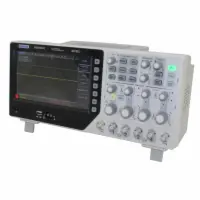
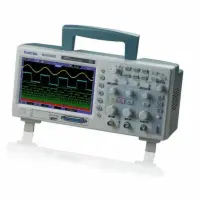
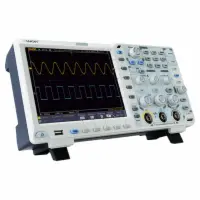
What is a DSO and what is it used for?
A Digital Storage Oscilloscope is a tool used for designing, manufacturing and repairing electronics that measures voltage over time. It can show high-speed repetitive and single-shot signals over multiple different channels to capture hard-to-catch bugs and transient events which would be almost impossible to diagnose otherwise. For example, you can see a signals frequency, whether a faulty part is altering the signal, how much of the signal is electronic noise, and much more.
How does a DSO work?
A DSO gets and stores waveforms in electronic memory, which it then processes and displays on a screen. Depending on how fast the oscilliscope is, it can be more or less accurate.
What basic factors should I consider when purchasing a DSO?
- Accuracy of the oscilliscope
- You may need a more or less accurate oscilliscope depending on your use case. For example, if youre measuring rise times or to extract qualifying data, you will need a more accurate oscilliscope that may cost more. If you are simply using it to approximate timing relationships or debug, you might be able to save a little money and go for something less accurate. Either way, having a more accurate oscilliscope can never hurt. Your decisions when working on electronics can depend on an accurate information, and having a reliable oscilliscope will strengthen your confidence and reliability in your work.
- Have enough features to expand your capabilities and save time
- You need to consider not only your current needs but any needs you might have in the future. Picking the right oscilloscope from the get-go can save a lot of time and money in the future. A high quality, feature-rich oscilloscope can provide many years of reliable use.
- Offer guaranteed and tested technical specifications
- Make sure that all testing parameters you need to use are marked as "Guaranteed" in the oscilloscope datasheet. Parameters marked as "Typical" aren't reliable and cannot be used to make meaningful measurements that are within quality standards.
- Fit within your size and cost restraints
- More accurate and feature-rich oscilloscopes will cost more than the most basic oscilloscopes, which you might not need. Size is also an important factor to consider. If you don't have much space or need to more the oscilloscope around regularly, a portable unit might be right up your alley. If you need an oscilloscope that will be used regularly on the same workbench and needs to be as accurate and reliable as possible, you might want to consider a desktop unit.
What are the technical differences between different oscilloscopes?
- Bandwidth
- More important for analog signals.
- Determines a DSO's maximum frequency range that it can measure accurately
- Entry level scopes will have a bandwidth of around 100MHz, which can accurately measure the amplitudes of sine-wave signals up to 20MHz, while high speed scopes can go up to 500MHz or more and can measure up to 100MHz accurately.
- Rise Time
- More important for digital signals.
- As rise time increases in speed, critical details of fast transitions like pulses and steps will be more accurate.
- Also important for measuring time.
- Probes
- Precision measurements from the oscilloscope start with a quality probe.
- Probes become an important part of the circuit you're measuring, introducing resistance, capacitive and inductive loading that may alter the measurement significantly.
- To minimize the impeding effects of probes, use a probe from the same manufacturer of the scope. They are designed to work together to account and adjust for the effects.
- Input Channels
- Scopes may have 2, 4, 8 or 16 scopes depending on the use application.
- Whichever you choose, they should all have good range, accuracy, linearity, flatness and resistance to static discharge so you don't fry your new oscilloscope.
- Sample Rate
- The sample rate of an oscilliscope is very similar to the FPS of a movie or video game, it determines how much detail you are displaying in a certain amount of time. In the case of the oscilloscope, it's how often the oscilloscope samples the signal.
- Entry-level scopes can have a sample rate or 1-2 GS/s, while mid-range scopes can have 5-10 GS/s.
- Triggering
- Gives a stable and readable display that lets you zero in on specific parts of complex waves.
- Most oscilloscopes will offer multiple types of triggering such as A&B, Video, Logic and Communications, which all have different use cases.
- Knowing how to use more advanced triggers effectively can significantly help find the most accurate and helpful information.
- Record Lengths
- Number of points in a complete waveform record.
- A scope can only store a limited number of samples in its memory, so the greater the record length the better.
- Navigation and Analysis
- Searching for specific anomalies in a sample can be extremely difficult, so having the correct tools built into your scope can help speed up or even automate the process.
- Important Features to look for:
- Zoom and Pan
- Play and Pause
- Marks and Points
- Search and Mark
- Advanced Search
- Waveform Measurements
- Automatic waveform measurements make it easier to sort through waveform data and find your issue.
- Most scopes have buttons that can take accurate measurements instantaneously.
- Basic choices include amplitude, period and rise/fall time.
- Some scopes may include advanced mathematical functions such as FFT, Integrate, Differentiate, Logarithm, Exponent, Trigonometric functions and much more.
- Software Integration
- Some more advanced scopes may be able to connect to a PC over USB or Serial to process the data on a full sized computer.
- This helps with:
- Signal integrity and jitter measurements
- RF Applications
- Support for embedded systems (I2C, SPI, CAN etc.)
- Education for electrical engineering students
- Power measurement
- Interface
- An oscilloscope should be easy to use, even if you're only using it occasionally
- Frequently used adjustment should have their own knobs
- AUTOSET and DEFAULT buttons should help setup the oscilloscope extremely fast
- The scope should be reactive and responsive, reacting quickly to changing events
- Connectivity and Expansion
- Being able to transfer the data over portable media or straight to a computer can be used for advanced analysis and simplifies documentation of issues
- See if the scope can connect directly to Windows or run third-party analysis software.
- Getting a user expandable oscilloscope can help extend the life of your scope significantly:
- Ability to add more memory in the future to analyze longer record lengths.
- Application-specific measurements and application modules.
- Support for different probes and modules.
- Support for battery packs and rack mounts.
- Software to control the scope from a PC to take automated measurements, log waveform data and export waveforms live.
Here's some more important & relevant information on oscilloscopes that may be helpful to read:
> Why are oscilloscopes so expensive?
> 17 Best Digital Oscilloscopes for Hobbyist in 2019 Reviews




